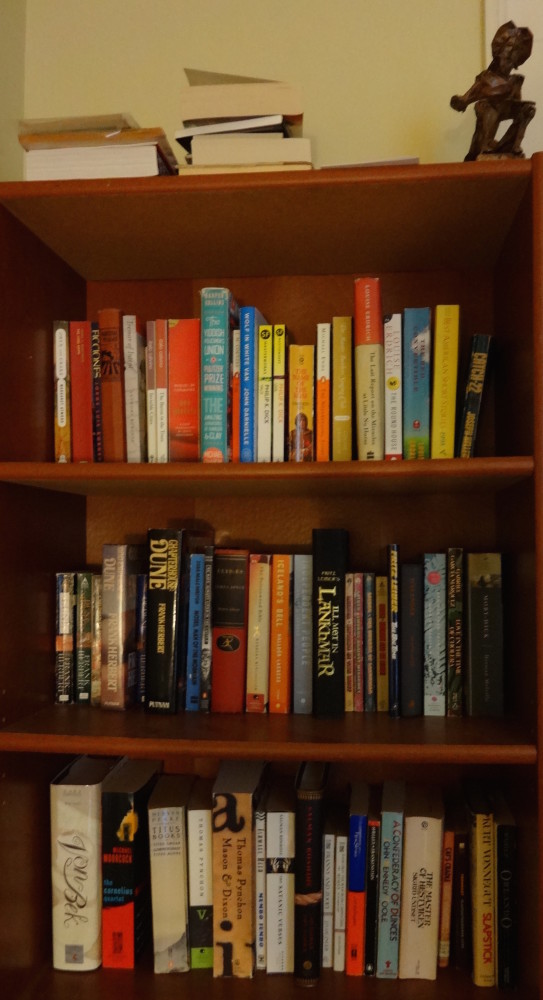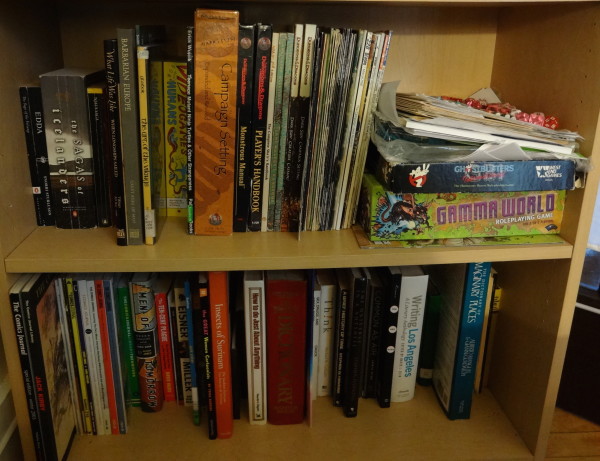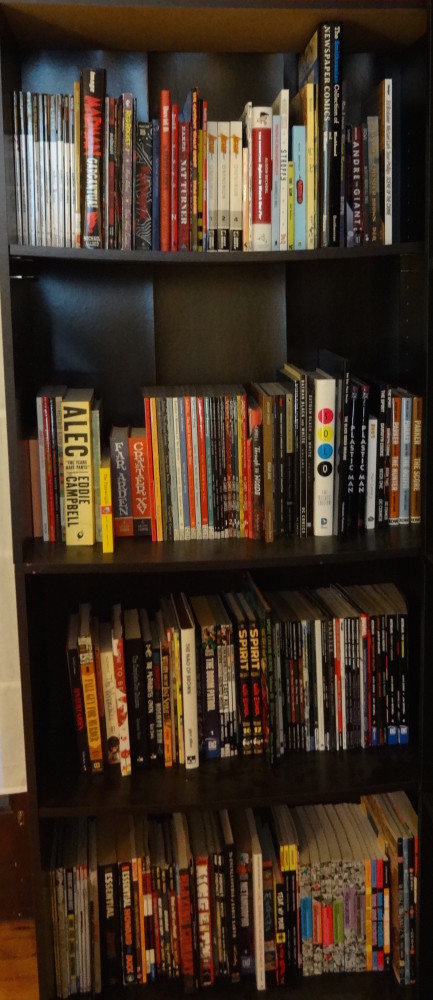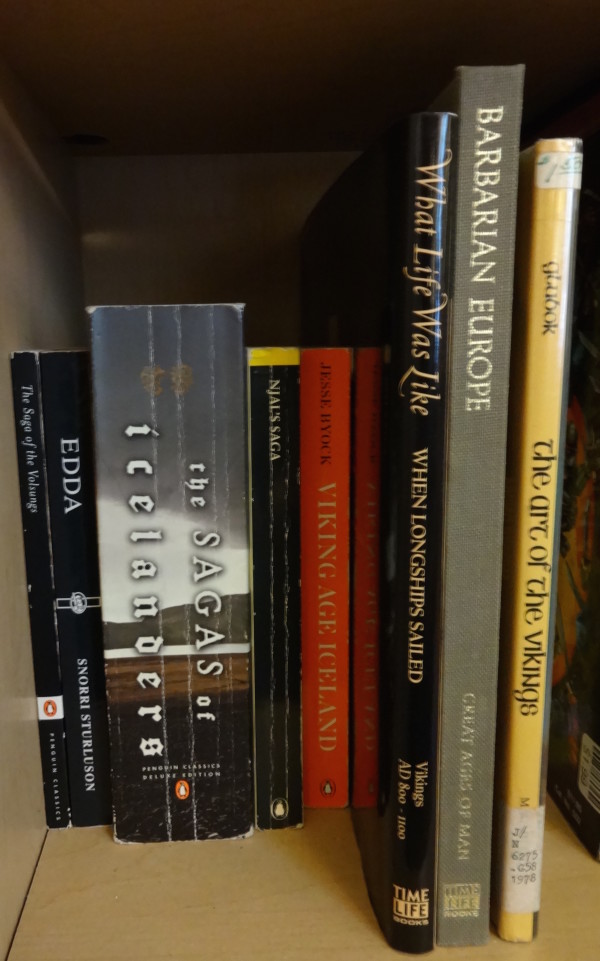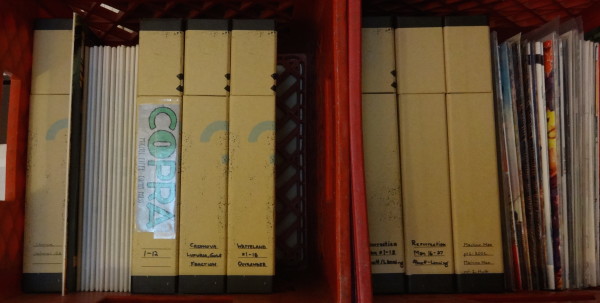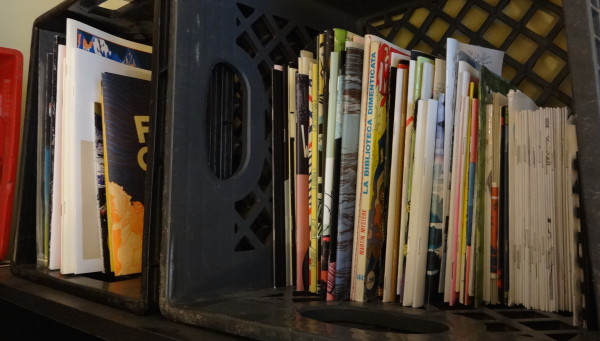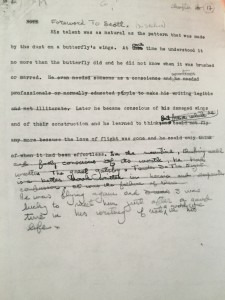What We’re Reading: Nothing Bad is Going to Happen
 Nothing Bad is Going to Happen by Kathleen Hale (HarperTeen, January 2016)
Nothing Bad is Going to Happen by Kathleen Hale (HarperTeen, January 2016)
Meet Kippy Bushman—spunky, awkward, intrepid sixteen-year-old detective. Add in one part murder, one part donuts, and three heaping spoonfuls of camp, and you have Kathleen Hale’s hilarious and brilliantly-executed Nothing Bad is Going to Happen (the sequel to her 2014 hit No One Else Can Have You).
In this second book, we find Kippy eagerly heading to her boyfriend’s house, only to find him gasping for breath after what appears to be a suicide attempt. Kippy knows Davey would never kill himself, but she’s the only one in town who suspects foul play. If she wants to bring his almost-killer to justice, she’ll have to do it herself. Though the premise was similar to Hale’s previous book, I still found myself racing through the pages. The twist at the end? I never saw it coming.
If you read this book for no other reason—if young adult isn’t really your groove, or if you get too easily spooked by crime novels—read it for Kippy. Hale’s narrator is so earnest, so unfailingly honest, that you can’t help but root for her as she clumsily navigates adolescence. Don’t believe me? Here’s an excerpt (spoiler-free!) from the beginning of the novel:
I pour over the flash card in my hand, trying to focus. I’m testing myself on sex moves for later. I’ll finally be free of my cast after school, so Davey and I decided that tonight’s the night. (For sex.)
The front of this card says DONUT THINGAMAJIG.
Donut Thingamajig = Eat a donut off your male partner’s penis, or “dick,” as some people like to call it. I read about this move in Cosmopolitan magazine and I was like “Whaaaaa…..?” Cosmo doesn’t exactly say what type of donut to use, but I think it should be the kind with the hole in the middle. That way, the donut hole mimics the vagina, or “cunt,” as McKetta would say. I’ve also decided I’m going to get two donuts in case one doesn’t fit correctly. The bad thing is that I make a lot of crumbs, even when I eat off regular plates, so I will probably make a big mess. Plain donuts will be the easiest to clean up, but they are also, objectively speaking, the worst type of donut.
Kippy is a teenager, plain and simple. She has no idea what she’s doing—both sexually, as in this passage, and in life in general, as in the rest of the book—but gosh dangit if she isn’t going to give it her all. It’s impossible not to love someone who goes after life (and criminals) with such fierce determination… and impossible not to laugh at their blunders along the way.
Aside from Kippy, the key player in this mystery novel-cum-comedy is the setting, the small town of Friendship, Wisconsin. It’s exactly what you would expect from a small town—the midwestern “nice,” the way everyone knows everyone, the regional idiosynchrasies like “dontcha know?” and hotdish potlucks—exaggerated about ten times to make it a character. Here’s something I’ve realized: People from small towns love to read about small towns.
More specifically, people from small towns like to read about small towns done right. We don’t want to be mocked, but at the same time, we love to poke fun at ourselves. Kathleen Hale navigates this territory magnificently. She allows the town to be self-aware of its own ridiculousness, and pokes fun at it only to expose its faults, while still focusing on the heart and community that drives it.
One of my main critiques of this book was going to be, shocker, from a feminist lens. On my first read, this book was disappointingly sexist. At one point, Kippy jokes to her friend Libby that, “We haven’t even passed the Bechdel test!”—and it’s true. Libby has impossibly large breasts, and Kippy looks down on her as the airhead cheerleader. The word “slut” is tossed around without consequence. I was disappointed that a book with such a vibrant, atypical protagonist could disappoint me by barely passing Feminism 101, and then I realized – this book isn’t meant to be a feminist manifesto.
What Kathleen Hale does, and does brilliantly, is represent what feminism and female friendships are like for teenage girls in small towns. They’re not perfect. Not everyone in high school (or anyone, for that matter) has read bell hooks, or knows words like “intersectionality” and “heteronormativity.” The point isn’t that feminism is a binary—either you’re perfect or you’re a misogynist—but that we all start somewhere. (This is also the thesis of the book “Bad Feminist,” by Roxane Gay, if you’re interested.) For a young girl in a small town—picture me, age thirteen, complete with glasses and braces and zits—Kippy Bushman is a misogyny-fighting superhero. And that’s important too.
All in all, I adored this book. I sped through it in a single sitting, alternatively laughing until I cried and hiding beneath the covers at the spine-tingling suspense. Is it perfect? Probably not. But I know one thing:
Kippy Bushman for President, 2036.
What are some of your favorite books with surprising humor?
What We’re Reading: The Dead Girls of Hysteria Hall
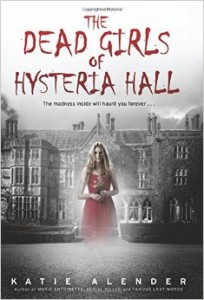 The Dead Girls of Hysteria Hall by Katie Alender (Point, September 2015)
The Dead Girls of Hysteria Hall by Katie Alender (Point, September 2015)
Is that font “Chiller”? Does the title sound like last summer’s box-office flop? Is this cover in general just really, really bad? The answer to all of these questions is a resounding YEP. The book that I read for this month’s What We’re Reading is a testimony to the adage, “Don’t judge a book by its cover.”
Guys, this book was really, really good.
Katie Alender sets the stage for The Dead Girls of Hysteria Hall with all the hallmarks of a cheesy haunted house flick. A sulky teenage girl (Delia, our protagonist) is dragged on a summer trip to a creepy old mansion (nicknamed “Hysteria Hall”) left to her by her dead great-aunt (a recluse who unexpectedly killed herself mere weeks prior).
Oh, and did I mention that the creepy old mansion used to be an asylum?
By the time I’m twenty pages in, I’m pretty confident that I’ve got this book figured out. Some ghosts will show up, there’ll be some creepy messages left in what is probably blood, and at least two members of the family will die. I’ve settled in for your standard haunted house book, and while I’m enjoying it already, I’m not really expecting anything game-changing. Oh, was I ever wrong.
[Warning: here there be spoilers.]
Fifty pages in, Delia, our plucky protagonist… dies. Locked in her bedroom, Delia finds herself surrounded by an ominous cloud of black smoke. Ten seconds later, her soul is staring down at her body, flung from the highest window and definitely not breathing. From here on out, the narrative is entirely inverted from expectations. Delia is no longer the haunted but the haunting. Her goal? Use her newfound ghostly powers (and her newfound ghost friends, Florence, Eliza, and Patience) to scare her sister and her mother out of the house, saving them from the same horrible fate.
The Dead Girls of Hysteria Hall is the young adult feminist horror romp you never knew you needed. The Bechdel Test is passed in the first few pages; the most important relationship established in the novel is that between Delia and her sister, Janie. While this novel isn’t making any great strides in terms of feminist theory (the most progressive its rhetoric gets regards the ridiculousness of the concept of “hysteria” and the time-honored tradition of calling women “crazy” when they get too dangerously independent), it’s revolutionary simply in its cast. There are only three male characters (as opposed to roughly ten unique, well-rounded, complex women) who make up fifteen percent of the book’s screen time, if I’m being generous. This book is about femininity, about mothers and daughters and sisters and friends, about being underestimated, about being weak and being okay.
Like most YA novels, there is still a romantic subplot for Delia. This comes in the form of Theo, a dapper gentleman ghost from the 1920s, but their romantic interlude occupies two chapters at most. Delia and Theo’s relationship is a luxuriously slow build that emphasizes the fact that this book isn’t about their love — it’s about Delia’s own growth.
Most of my enjoyment of this book came from two planes: the concept (and its girl-powered cast), and its surface-level thrills. While I genuinely enjoyed The Dead Girls of Hysteria Hall, I probably wouldn’t expect to find it on the Printz Award list any time soon. The prose wasn’t bad, but it didn’t leave me breathless either; a few days out from finishing it, and I can’t pick out any passages that really lingered with me. In addition, a handful of the plot points seemed either forced or rushed. Characters who were marked as evil were suddenly redeemed with little explanation.
Then again, why do all books have to be flawless and profound musings? I don’t believe in the term “guilty pleasure.” I think we can genuinely enjoy things that aren’t perfect without having to defend ourselves. Sometimes, I just want a fun, lighthearted feminist gore-fest that scares my pants off.
Katie Alender’s The Dead Girls of Hysteria Hall is exactly that.
What are your favorite spooky reads?
Hazel & Wren Staff Shelfie: Aaron King

Editor’s Note: Dear readers – today, we take a break from the normally scheduled What We’re Reading reviews to share with you something so personal, it might just make some of us blush: our shelfies. Aaron share his first today, with more shelfies from other staff coming up in the next few weeks. Read on, into our dear, writerly souls.
Here are my only shelves of “real books.” Most of them are fiction, organized solely by author’s last name since I don’t believe in genre as an organizing hierarchy. There are lots of books that I love that aren’t here, which maybe makes my shelves a bad representation of me as a human. I refuse to buy something unless I (a) can’t get it from the library or (b) want to read it multiple times and mark it up. What I end up having are perennial favorites (Frankenstein, everything by Louise Erdrich) or weirdies I’ve had to hunt for (everything by Fritz Leiber).
Up top there are books I’ve borrowed from people along with an awesome paper statue of Don Quixote that a friend brought me from Mexico.
Below the fiction is everything else: poetry, history, pop stuff, and so, including a few books on maps since I’m obsessed with them. It’s also where my books about comics end up. Oh, and all my roleplaying game books are here along with all my notes on our long-running D&D campaign. It might be slightly embarrassing, but it’s a straight line of inspiration from those books to a lot of the stuff I read now, and I still get a lot of entertainment out of those old things. No shame!
And here’s the weight of my library: three shelves of comics. Since so many comics have multiple hands involved in their creation (from scripter + artist to scripter + penciler + inker + colorist + editor[s]), my organization method is a little arcane.
Most of these shelves are alphabetized by the last name of the person I consider primary to my interests. Sometimes this is the scripter, like with the works of Warren Ellis. Sometimes it’s the artist, exemplified by Jack Kirby. Occassionally, it’s even the editor, as seen in the row of anthologies edited by Mark Chiarello. It would never work for a library, but since it’s only here for me, it’s perfect.
“Books about Vikings” is probably the most particular genre of books I have. It all started in undergrad with the best class I ever too, Icelandic Sagas. From there, I started using the saga voice in short stories and comics I made. There are also tons of great novels that use a similar voice: Iceland’s Bell by Halldór Laxness (Iceland’s only Nobel laureate), the works of Sigrid Undset (a Norwegian Nobel laureate), and Frans Bengsston’s The Long Ships/Red Orm, which did not win a Nobel Prize, but it’s still an excellent adventure tale.
For a more modern take, Dustin Long’s Icelander is a saga by way of Nancy Drew with some meta commentary on the construction of stories.
One think I don’t like about all the comics I have is that a lot of them end up in boxes in a closet. Lately, though, I’ve been able to move many of them into these Comic Cartel boxes. I use them to display my longer runs of comics, particularly those that will never be issued in collected editions (like the first volume of Resurrection Man or my strange obsession with Marvel’s Machine Man) or comics that were created to be consumed as single issues, like Criminal and Casanova (although the latter has moved away from that format).
Speaking of books that are hard to display, here are all my comics that aren’t “standard” pamphlet size that don’t have a spine. There are a bunch of minicomics, including some Chinese bootleg Tintins and the gone-to-soon Oily Comics. From there, it moves up to some sizable beasts like Mowgli’s Mirror and an old issue of the “prozine” witzend that I bought for an Alex Toth story.
Getting new minicomics is great; it feels like getting an art object directly from an artist. It helps remind me that comics are a vibrant and living medium, and that the comics I read today will be the sought-after archival editions in following decades.
So, reader, what would your shelfies look like? Stay tuned for other Hazel & Wren staff shelfies in the coming weeks.
What We’re Reading: A Moveable Feast
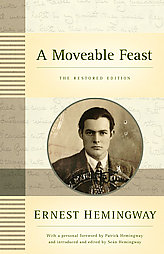 A Moveable Feast: The Restored Edition by Ernest Hemingway (Scribner, 2009)
A Moveable Feast: The Restored Edition by Ernest Hemingway (Scribner, 2009)
Ernest Hemingway never gave a title to the memoir he wrote about his life in Paris in the 1920s. He hadn’t finished the book before he died, and it was published posthumously with the help of his wife Mary. However, the title was chosen from something Hemingway had once said: “If you are lucky enough to have lived in Paris as a young man, then wherever you go for the rest of your life, it stays with you, for Paris is a moveable feast.”
Paris stayed with Hemingway long after he left it. Though he very well may have thought about or planned to write a memoir about his years in Paris in the 1920s, he didn’t start what he temporarily called “The Paris Sketches” until 1957, after having lived in Key West, Cuba, Spain, and throughout Europe during WWII. In A Moveable Feast he writes about Michigan while he’s living in Paris, and he finally writes about life in Paris once he’s been immersed in many other places. I had a similar experience when it came to reading the memoir.
When I was studying abroad in Paris, I bought this copy of A Moveable Feast without knowing it was the restored edition, or understanding what that meant, (read the introduction—it’s worth it). I said to myself, “I am going to buy A Moveable Feast at Shakespeare & Company in Paris.” And that’s exactly what I did, but I didn’t even open its pages until two years after I’d last been in Paris, just a few weeks ago. I was glad that I waited, because though I made a point to visit many of the places Hemingway has written about, it was rewarding to visit Paris through his own eyes.
Mary Hemingway and an editor at Scribner gathered the manuscript as it was in 1960, heavily edited it, and published the book in 1964. However, Hemingway continued to work on the manuscript until the spring of 1961, and for the first time in 2009 it was published as Hemingway had last left it, including some unfinished and never-before-published chapters.
Though I never read the non-restored edition, I highly recommend picking up a copy and exploring Hemingway’s memories as he last left them. As a writer, he often struggled with finalizing his work, and images of his manuscript show how many meticulous changes he has made in just a brief paragraph.
Hemingway wrote a forward to the chapter about F. Scott Fitzgerald, and here are some examples of its earlier versions:
The forward in the first edition includes the lines crossed out by Hemingway. The restored edition is published with Hemingway’s own changes made:
His talent was as natural as the pattern that was made by the dust on a butterfly’s wings. At one time he understood it no more than the butterfly did and he did not know when it was brushed or marred. Later he became conscious of his damaged wings and of their construction and he learned to think. He was flying again and I was lucky to meet him just after a good time in his writing if not a good one in his life.
Of course there is not much wrong with the original version of the forward, but writing is revising, isn’t it? And Hemingway revised his writing beyond what we’ve seen in previous publications of the text. When the first edition was published posthumously, the second person point of view was removed from a handful of pages, and his reflections on his first marriage and divorce were cut by his fourth wife Mary. The heart of the story, the tales of the Lost Generation, and the sentiment of being a struggling writer in Paris were never lost in publication, but I found that some of my favorite moments while reading were those that were unique to the restored edition.
When written in the second person, I felt that Hemingway’s thoughts were speaking directly to the reader, inviting them to join him in Paris. It was a delightfully nerdy as watching Midnight in Paris for the first time, or going to Brasserie Lipp and ordering the exact same meal that Hemingway ate and wrote about in A Moveable Feast (cevelas, sausage smothered in mustard, and a cold beer). The second person point of view brought me back there. The book begins:
Then there was the bad weather. It would come in one day when the fall was over. You would have to shut the windows in the night against the rain and the cold wind would strip the leaves from the trees in the Place Contrescarpe.
Who, me? You need me to shut the windows? I know I’m an absurd romantic when it comes to Paris, and maybe I’m just a sucker for effective run-on sentences, but I’m starting to feel the cold wind he describes.
Whether you’ve been to Paris or not, I urge you to experience it with Hemingway in hand.
What do you think of posthumous publications, such as this? And the juxtaposition of an author’s original notes, and restored editions? There’s a conversation that happens there, as we’ve seen here. What does that mean to you?

